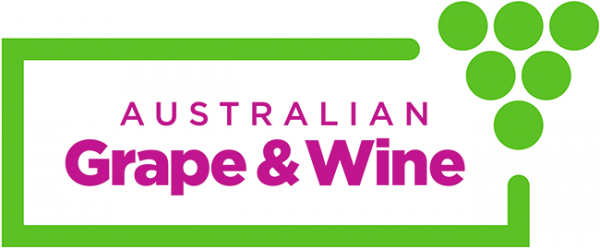Winter pruning may seem like tedious task but it is crucial to setting up the vineyard for the coming season in terms of yield, shoot number, canopy shape and size. There are many factors to consider before the first cut is made. Each vineyard block will need to be assessed individually to identify the most appropriate pruning regime for that variety, on that rootstock, with that soil type, in this type of climate to make this style of wine and meet these quality parameters.
However, pruning is not just about achieving yield targets but is the best time to assess trunk disease incidence and severity and whether you should consider changing your pruning method in order to maintain vine health and sustain the long-term lifespan of the vines. Recent research into pruning and trunk diseases has indicated that there is a strong need to consider protection of the pruning wounds, particularly in the most susceptible varieties, most of which are common across all Australian wine regions. There are paints that can be manually applied at the time of hand pruning but one of the most efficient ways of getting over the ground quickly is using a registered fungicide spray as soon after pruning as possible to prevent fungal spores entering the vine through these open wounds. Using a recirculating spray-cart for this operation will also help to reduce the overall cost through recovery of unused spray and will prevent hazardous chemical trespass.
It is also useful to consider the percentage of the vineyard that is infected with trunk disease and how that is impacting on yield. Perhaps it is no longer financially viable to continue with the status quo and remedial work may need to be undertaken to bring up fresh wood, or in the worst case replanting may be the only option.
Brooke Howell
Pruning tips for managing grapevine trunk disease.
Dr Mark Sosnowski, Senior Research Scientist at the South Australian Research and Development Institute (SARDI) and a previous ASVO Paper of the year winner has pruning tips for managing grapevine trunk disease (GTD) .
- Where possible, avoid pruning during rainfall when airborne spores of GTD pathogens are most prevalent.
- Consider pre-pruning in early-mid winter and hand clean up later in the winter when risk of infection is reduced.
- Contamination of pruning tools is not a major risk to spreading GTD within the vineyard, but always clean pruning tools when moving between blocks and vineyards.
- Protect all wounds by spraying with a registered fungicide within 1 week of pruning and before any rain, ensuring good coverage (fungicides will provide up to 2 weeks’ further protection, which should be sufficient to cover the duration of high wound susceptibility).
- Prioritise younger, healthy vines for pruning in dry conditions and apply preventative sprays.
- Remediate infected vines by cutting out all signs of infection from cordons and trunks, allowing a further 10-20 cm buffer where possible, followed by painting wounds with paint or a registered wound sealant.
For more information, read the Eutypa Dieback Best Practice Management Guide which can be found here:
Delayed pruning: A tool to counteract warming effects
Victor Sadras, Martin Moran, SARDI; Paul Petrie, AWRI
Delayed pruning seeks to spread maturity, hence decompressing harvest, and shift berry development into more favourable conditions later in the season, hence preserving fruit balance and regional wine styles.
To be a viable option in commercial vineyards, delayed pruning has to meet four criteria:
- shift phenology and delay maturity,
- be positive or neutral for yield,
- be positive or neutral for wine quality,
- be neutral for cost and fit current vineyard practices
Read more
Managing Eutypa Dieback
Eutypa dieback is caused by the fungus Eutypa lata and is one of the major trunk diseases of grapevines.
Eutypa occurs worldwide in wine regions that exceed an annual rainfall of 350mm. In Australia, eutypa was first detected in the 1930s and, apart from Western Australia, is now widespread, having a significant impact on the productivity and profitability of viticulture in this country. All major grapevine varieties grown in Australia are susceptible to eutypa infection. In South Australia, eutypa dieback is most pronounced in Shiraz, Cabernet Sauvignon and Grenache. The varieties Riesling and Merlot are less susceptible to the disease.
Click here to access a video series by Clare Region Winegrape Growers Association. This work supported through the Wine Australia Regional Program for SA North.
Further reading
Sosnowski, M.R.; Ayres, M.R.; Billones-Baaijens, R.; Savocchia, S.; Wicks, T.J.; Scott, E.S. (2017) Innovations in the management of grapevine trunk diseases. In Proceedings of the 16th Australian Wine Industry Technical Conference, Adelaide, South Australia 24-28 July 2016. Eds Beames, K.S.; Robinson, E.M.C.; Dry, P.R.; Johnson, D.L. Pp 91-95.
Sosnowski M, Ayres M, Billones-Baaijens R and Savocchia S (2017) Practical management of grapevine trunk diseases. Final Report to Wine Australia, Project SAR1205, January 2017.
Fact Sheet
Best practice management guide for Eutypa dieback. (Version 1.1, Feb 2018) Wine Australia.
Selected Journal articles on a similar theme;
Remember ASVO members have full access to Journal articles log in to the members section to read more.
Ayres MR, Wicks TJ, Scott ES and Sosnowski MR (2017) Developing pruning wound protection strategies for managing Eutypa dieback. Australian Journal of Grape and Wine Research 23, 103-111.







